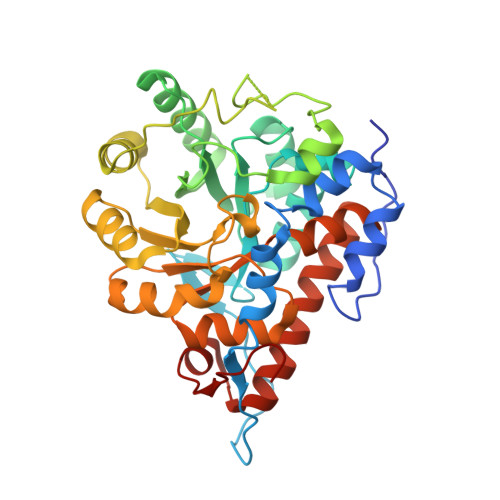Crystallographic study on the interaction of L-lactate oxidase with pyruvate at 1.9 Angstrom resolution.
Li, S.J., Umena, Y., Yorita, K., Matsuoka, T., Kita, A., Fukui, K., Morimoto, Y.(2007) Biochem Biophys Res Commun 358: 1002-1007
- PubMed: 17517371
- DOI: https://doi.org/10.1016/j.bbrc.2007.05.021
- Primary Citation of Related Structures:
2E77 - PubMed Abstract:
L-Lactate oxidase (LOX) from Aerococcus viridans catalyzes the oxidation of L-lactate to pyruvate by the molecular oxygen and belongs to a large family of 2-hydroxy acid-dependent flavoenzymes. To investigate the interaction of LOX with pyruvate in structural details and understand the chemical mechanism of flavin-dependent L-lactate dehydrogenation, the LOX-pyruvate complex was crystallized and the crystal structure of the complex has been solved at a resolution of 1.90 Angstrom. One pyruvate molecule bound to the active site and located near N5 position of FMN for subunits, A, B, and D in the asymmetric unit, were identified. The pyruvate molecule is stabilized by the interaction of its carboxylate group with the side-chain atoms of Tyr40, Arg181, His265, and Arg268, and of its keto-oxygen atom with the side-chain atoms of Tyr146, Tyr215, and His265. The alpha-carbon of pyruvate is found to be 3.13 Angstrom from the N5 atom of FMN at an angle of 105.4 degrees from the flavin N5-N10 axis.
Organizational Affiliation:
Institute for Protein Research, Osaka University, Suita, Osaka 565-0871, Japan.
















